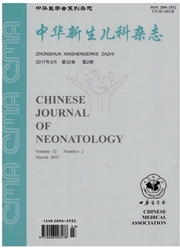

 中文摘要:
中文摘要:
如果不认清我国供给侧结构性改革与西方供给学派的重大区别,寻找其理论根基,将会诱发诸多"颠覆性错误"。从经济学发展历程来看,供给侧理论而非需求侧理论居于主导地位,供给侧理论伴随整个经济学发展。我国供给侧结构性改革与供给学派施政背景与目的不同。我国供给侧结构性改革蕴含着系统辩证的大智慧,有其理论来源和实践基础,供给侧结构性改革理论根基是中国特色社会主义政治经济学。基于新时期供给结构性改革时代背景特征,实施供给侧结构性改革要坚持加快传统产业改造优化升级,积极培育加快发展战略性新兴产业及高技术产业,实施板块与轴带结合的区域发展战略和提升高级生产要素供给能力。供给侧改革需要双侧管理,协同推进;优化发展环境,降低生产成本;推进制度供给系统性改革,完善生产关系。
 英文摘要:
英文摘要:
If the major differences between China’s supply-side structural reform and western supply-side school can’t be clearly discovered, seeking its theoretical foundation would induce several "subversive errors". From the perspective of economic development, with the development of economy, supply-side theory instead of demand-side theory enjoys the dominated place. The policy backgrounds and intentions of China’s supply-side structural reform are different from western supply-side school. China’s supply-side structural reform contains great wisdom of systematic dialectics with its theoretical source and practical foundation. The supply-side structural reform is theoretically rooted in the socialist political eco-nomics with Chinese characteristics. Based on specific features of this era background, the main content of supply-side structural reform should include traditional industries’ continued rebuilding, optimization and upgrading, new strategic and high-tech industries’ positive formation and accelerated development, strategic regional development with combination of modules and axial zones as well as improvement of advanced production factors’ supply capacity. Further specific measures should be taken in supply-side structural reform to achieve bi-directional management, cooperative promotion, developmental environment’s optimization, production cost reduction so that the systematic reform of supply can be promoted with production relationships being improved.
 同期刊论文项目
同期刊论文项目
 同项目期刊论文
同项目期刊论文
 期刊信息
期刊信息
